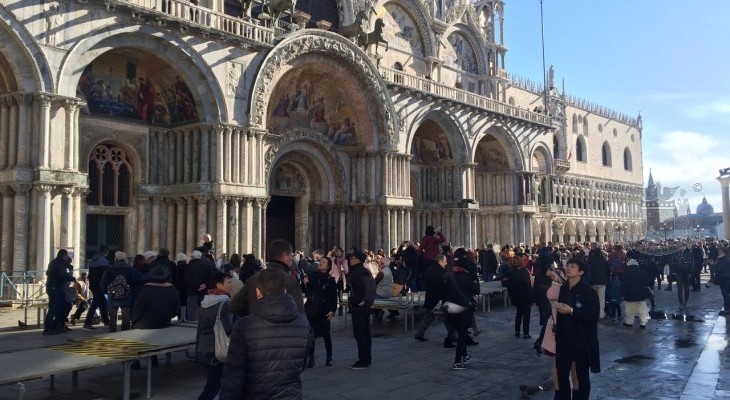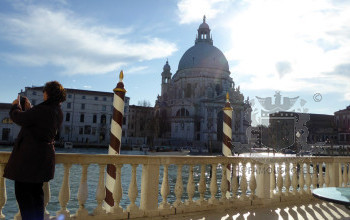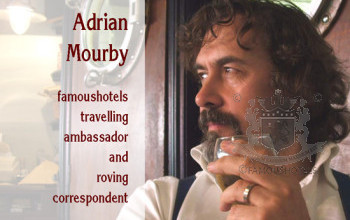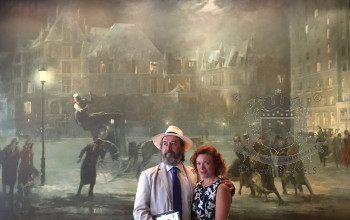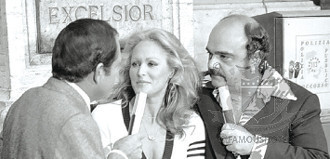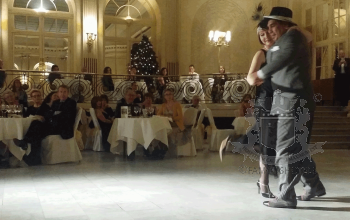BAGLIONI LUNA VENICE
( words)
At the western end of Piazza San Marco, just behind the Napoleonic Wing that houses the Museo Correr, sits one of the oldest hotels in Venice.
Hotel Luna began life in the twelfth century as the Osteria della Luna. It was a simple house near the Grand Canal that provided board and lodging for knights heading east to the Crusades.
 After a long and turbulent history – during which time it was seized from the Knights Templars and later served as a residence for Venetian senators – the Luna became a commercial hotel in 1574 with the moon as its symbol. At a time when Venice provided a temporary home for people of many nationalities and languages - not all of them literate - visual symbols were all-important. Today the city is still full of symbols if you know how to read them but in the sixteenth century travellers would have known to look for the symbol of the moon as you exited Piazza San Marco in the direction of San Moise.
After a long and turbulent history – during which time it was seized from the Knights Templars and later served as a residence for Venetian senators – the Luna became a commercial hotel in 1574 with the moon as its symbol. At a time when Venice provided a temporary home for people of many nationalities and languages - not all of them literate - visual symbols were all-important. Today the city is still full of symbols if you know how to read them but in the sixteenth century travellers would have known to look for the symbol of the moon as you exited Piazza San Marco in the direction of San Moise.
After Napoleon destroyed the Republic of Venice in 1797, and after the island city was handed to the Hapsburg Empire at the Congress of Vienna in 1815, the dining room of the Luna Hotel became a meeting place for young imperial cadets. Those who have seen the film Effie (2014) will know how John Ruskin’s frustrated wife flirted with Austrian officers in Venice in the 1840s. It is possible that they entertained her – chastely - at Hotel Luna.
In the 20th century Giuseppe Cipriani, a barman who had just had a loan handsomely repaid by one Harry Pickering of Boston, opened Harry’s Bar next door.
Then in 1988 the Luna was bought by Roberto Polito’s Baglioni company as the group’s second hotel. Mr Polito filled it with his own antique furniture which is still on show today. Celebrities flocked to the hotel for its style, service and central location. In the 1990s US astronaut Neil Armstrong came to stay and had his photograph taken next to the marble Hotel Luna plaque: the First Man on the Moon at the first Luna Hotel in Venice.
Today the Baglioni Luna is a remarkable but discreet jewel in Venice. It neither faces onto the Grand Canal (Harry’s Bar, housed in a former rope factory has that honour) nor does it face onto the main drag between San Marco and Chiesa San Moise. In fact it is almost hidden down Calle Larga Ascensione. One has to know it’s there.
No big sign attracts passing custom and yet when you look up from the landing stage for water taxis, every room has its own small red-draped balcony looking out on to the Giardini Reale (created in 1806 at Napoleon’s behest).
Skip forward two centuries to the present day and running the Baglioni Luna in 2019 is Gianmatteo Zampieri who clearly loves history as much as he loves his hotel. Gianmatteo is very proud of the Luna’s many suites – all named after painters like Bellini, Canaletto, and Titian, who made their names in Venice. He is also proud of the Marco Polo Ballroom where guests breakfast every morning under eighteenth-century frescoes painted by pupils of Tiepolo.
“This ceiling represents the Four Seasons,” he explains expansively. “And it is intended as an invitation for us to grasp the fleeting joys of earthly life”.
Certainly anyone who has qualms about accepting a second glass of prosecco at breakfast should take encouragement from the main Tiepolo oval above. “Here you can see a male figure holding a glass of red wine,” says Gianmatteo. “And he is surrounded by three ladies with fleshy bodies and rosy complexions.”
Gianmatteo is also proud of his latest innovation, the Codega Experience. Originally codegas were professional guides in medieval and Renaissance Venice. They escorted wealthy guests round the city with a flambeau or lantern (Venice was very, very dark in those days), acting not only as escorts, protectors, and guides, but entertaining visitors with stories of their city.
Gianmatteo, always keen to bring alive the remarkable past of Venice, has recently revived the Codega experience. It costs €560 for two guests and consists of an hour walking through the backstreets of the San Marco sestiere escorted by a codega. The tour is then followed by dinner with drinks in the hotel’s neo-classical Canova Restaurant. The night I joined the tour, it was given by a young woman called Giovanna who introduced herself simply as our codega for the night She carried an electric lantern – a modern day concession to sudden gusts of Venetian wind – and wore a cape and carnival mask. I was glad I had a cloak of my own to join in the masquerade.
Off we headed off into San Marco, dipping into darkened alleyways, and being shown unusual sights such as an outdoor gambling den under a small portico, and where duels were fought. One moment we were in the brightly lit merceria – a warren of modern shops that link San Marco with Rialto – and the next minute our codega had taken us into a narrow dark sidestreet where we could easily have been back in the eighteenth century of Casanova. At one point we suddenly ended up in the dark at Palazzo Contarini del Bovolo with its external multi-arch spiral staircase - known as the Staircase of the Snail - looping up dramatically above us.
Giovanna was a mine of information (some of which I shall use the next time I escort a tour round Venice) and she got us back bang on time to have dinner in Canova where Antonella is fast becoming my favourite Venetian sommelier.
The Baglioni Luna is lovely, friendly hotel which manages to get that combination of history and innovation just right. Having a general manager who cares a lot about both probably helps.

